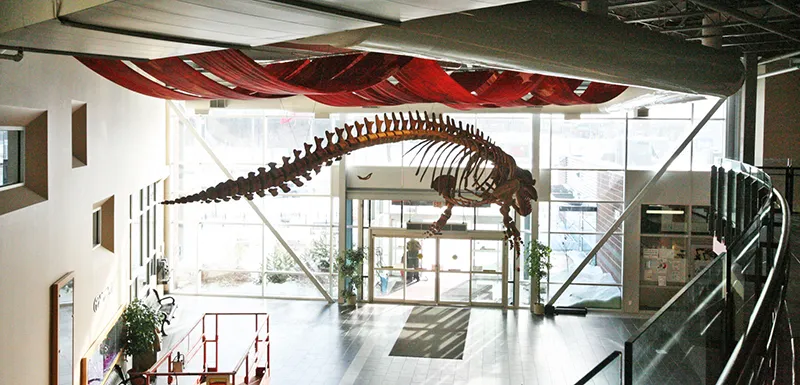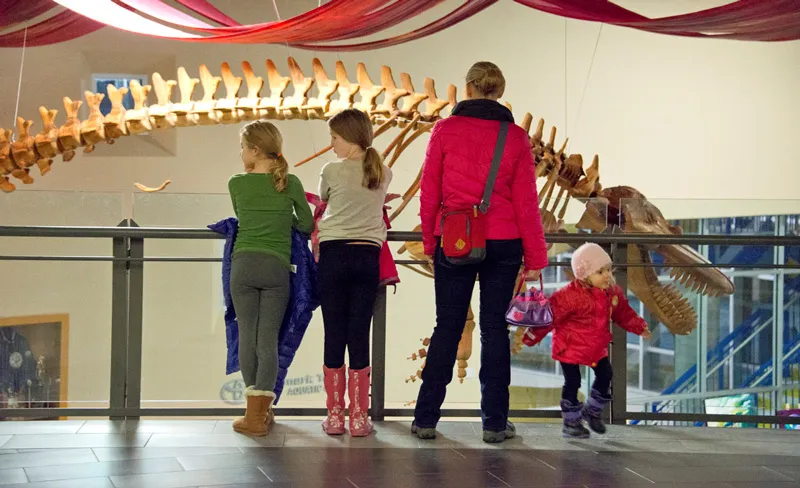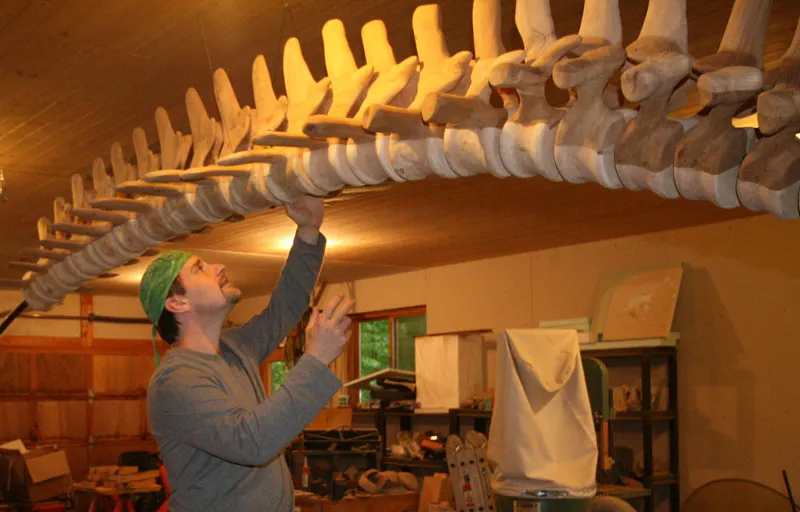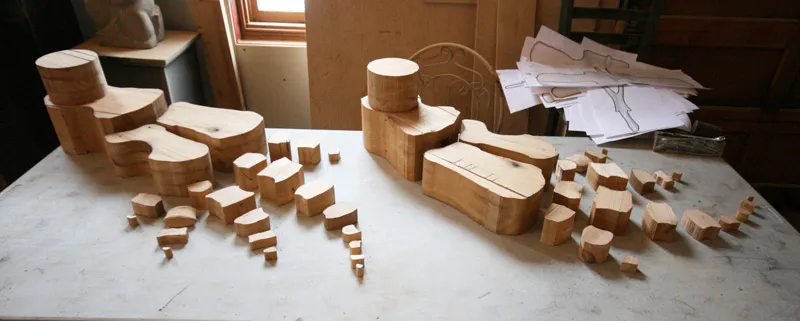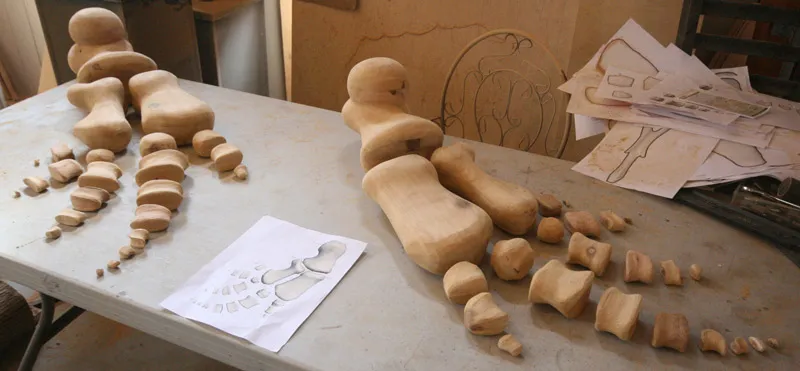This Whale Sculpture Was Modeled After a Beached Orca
Canadian artist Ken Hall built Legacy based on 3D scans of the skeleton of Hope, an orca that died on the coast of Washington in 2002
/https://tf-cmsv2-smithsonianmag-media.s3.amazonaws.com/filer/a1/68/a168421c-b438-4ce1-bc55-a39031ff56ba/legacyinteractive_themuseum_02sm.jpeg)
When Ken Hall first knocked on his neighbors’ door, it wasn’t to borrow a cup of sugar or an egg. He came to ask for the remains of their rotting decks—he needed cedar wood and lots of it.
They asked, “What’s it for?”
Quite unexpectedly, he said, “I’m going to build a whale!”
Hall found himself in the midst of this story because of a shift in direction. After 15 years of building 3D worlds for computer games, he wanted to build something that could be touched and seen without a screen. But what?
The Canadian artist knew he was going to create something big. Hall was drawn to large animals, especially those that had community and social structures, similar to what we know as humans. Hall found a story that caught his attention—it was the story of Hope, an orca that beached and died on the coast of Washington State in 2002. A necropsy found that the female animal contained the highest level of contaminants ever recorded in an orca, along with signs of significant bone loss and a bacterial infection. The Port Townsend Marine Science Center (PTMSC) led the effort behind the removal of Hope from the shore, and subsequent necropsy.
In 2011, the Idaho Virtualization Laboratory created a 3D scan of the skeleton, before it was put on display at PTMSC. Hall began to build prototype pieces based on the 3D data. He chose wood, and specifically cedar, as his medium. The cedar, Hall says, is an “homage to totem carving, and its role in passing knowledge to future generations,” honoring the traditional use of cedar by First Nations for totem poles in the Pacific Northwest. For it to go on display at various museums, the piece—which he named Legacy—would have to be made travel-ready, meaning it could be put up and taken down in a relatively short period of time, and displayed in a variety of ways based on the available space. Hall’s background in mechanical engineering came in handy at this point—“It was like a giant jigsaw puzzle” he says.
Once 11 of the 46 vertebrae were carved, Hall realized just how big of a project this would be—it took him six months of full-time fabrication to make all the pieces (there are over 200 bones that make up the sculpture). The sculpture was completed and put on display at the Dufferin County Museum & Archives in Ontario. Sometimes accompanied by projection lights that provide a water-like effect and orca vocalizations playing in the background, the finished piece gives visitors a feeling of being underwater.
That feeling is what Hall wanted to provide people walking through the exhibit—one that highlights our connections as humans to the Earth and our ecosystems, like Hope and her community in the Pacific.
In the case of Hope, a transient (also called Bigg’s killer whale), researchers weren’t able to point to one specific cause of death; however, contamination is certainly an issue for all orcas in the region. There are three distinct orca ecotypes, or populations, documented off the U.S. North Pacific coast—transient, resident and offshore. All three overlap in parts of their home range but have distinctive physical traits, behaviors and even genes. According to the National Oceanic and Atmospheric Administration (NOAA), the sub-population of Southern Resident killer whales are “among the most contaminated marine mammals in the world” and listed as endangered—only 78 individuals were counted in the population in 2014.
Contamination comes from a variety of sources ranging from legacy chemicals that are no longer used, but persist in the environment (like DDT and PCBs), to chemicals that make up flame-retardants, found in things like carpets and furniture. Southern Resident Killer Whales are one of eight “highly at-risk species” that NOAA is drawing attention to in its “Species in the Spotlight” series. Lynn Barre, who leads the Seattle branch of NOAA’s Office of Protected Resources, is encouraged to hear about the art piece—“Even [orca] bones or skeleton as an art piece can inspire people to be [environmental] stewards.”
After its inaugural showing, Legacy has moved to other venues in Ontario and is scheduled to be on display at the Ontario Science Centre beginning in 2017 before embarking on an international tour. Over two million visitors have experienced Legacy to date.
“Legacy is a stunning example of how science and nature can influence art and how art can expand the appreciation of science,” said Mary Jane Conboy the director of science content and design at the Ontario Science Centre. “As Canada celebrates its 150 years in 2017, displaying Legacy at the Ontario Science Centre is particularly timely. This visually compelling piece asks our visitors to reflect on our current environmental practices and the changes we want to inspire for the future.”
Hall hopes to some day take the immersive exhibit to another level by incorporating his gaming background into the onsite experience. 3D virtual reality could evolve the sculptural art piece into an interactive installation: panning over the skeleton would allow visitors to see what the full animal looked like, not just an articulated skeleton. Zooming in to an area could answer questions, like “how do whales breathe,” “what are the impacts of underwater noise on whales,” and “what is it like to 'see' with sonar?”
Hall’s environmentally focused pieces tell a story. He wants visitors to gain a better understanding of how humans can live in harmony with nature. “I want to try to make thinking and understanding cool again,” he says, and he intends to keep his focus on our connection to the world around us in the hope that we all become more empathetically aware of our surroundings.
 Learn more about the seas with the Smithsonian Ocean Portal.
Learn more about the seas with the Smithsonian Ocean Portal.
